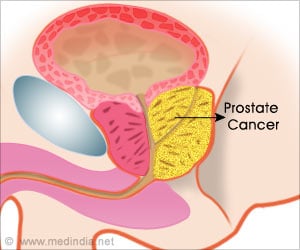Men’s Health Month, observed annually in June, aims to raise awareness of the various preventable diseases and health conditions that affect men.

- Men's Health Month is celebrated in June in the United States, with month-long awareness programs on various preventable health issues, diseases and conditions that affect men.
- National Men’s Health Week is also celebrated in June each year, during the week leading up to or including Father's Day. This year the designated week is from 12th-18th June.
- Men are the worst affected when it comes to heart disease, stroke, and certain types of cancer. They are also more prone to exhibiting risky and aggressive behavior which can result in accidents and fatality.
The Men’s Health Network (MHN), which is the main organizing body behind the Men’s Health Week and Month, is a non-profit organization in the United States operating on a national level. Its goal is to address the growing crisis in men’s health over the past decades; to advocate, educate and raise awareness on preventable men’s health issues, lower premature mortality, and save the lives of men and boys.
Men’s Health Month 2017
Men’s Health Month involves month-long awareness activities such as health fairs, screenings, health education programs, and campaigns, involving media outreach, policy makers, health care professionals, and every individual who is motivated to give the men and boys in their lives a happy and healthy life. Men are to be motivated to seek regular medical advice so that early detection is possible in the event of onset of disease. They should also be encouraged to opt for early treatment following diagnosis. The month also focuses on raising funds and promoting research and studies into men’s health issues.Wearing Blue
Wear Blue is a program designed by the Men’s Health Network with the purpose of raising funds that can be used for advocacy and awareness programs. Each year, communities across the States wear blue to celebrate the men in their lives, and to show that they care for their health and well-being.
Why should we address men’s health?
Many countries of the world, particularly the developing nations, continue to maintain an ever-widening gender-gap, where women are the ones suffering massive maltreatment, both at home and outside. They are subjected to domestic abuse, workplace discrimination, malnourishment, sexual assault, to name a few. According to the World Health Organization (WHO), 99% of maternal mortality, the rates of which are devastatingly high, occurs in developing countries. In poorer countries, women, especially those living in the rural areas, receive little to no attention when it comes to health and well-being.
In developed countries, however, the gap is wide enough to be a cause for public concern.
Men, in general, tend to be more addicted to tobacco and alcohol consumption. They are also employed in more hazardous working conditions, perform heavier manual labor, and are more prone to aggressive behavior resulting in higher fatality from driving accidents, and violence.
In some countries, the gendered mortality rate results from the cultural conditioning of men and women. Men, with their stereotypical notions of power, and masculinity, tend to be more sexually active. Yet, each sexual conquest is liable to spell doom for them by increasing the chances of sexually transmitted diseases.
There is also a gender difference in terms of death by suicide, with men committing suicide much more than women. The difference is once again less prominent in less developed nations, where a large percentage of women are forced to take their lives, due to their abysmal social status.
Men are also more prone to certain health conditions and diseases than women and, in high-income countries, they avail less health care facilities than their female counterparts. They are more likely to postpone health check ups and tend to care less for healthy food habits, and a healthy lifestyle.
It is therefore self-evident why it is high time men’s health became a public health issue, to be addressed at the level of public policy making, governmental interventions and media awareness.
Most common diseases and conditions that tend to affect men include:
Heart Disease and Stroke: Cardiovascular disease is the leading cause of death in men in the United States, across races and ethnicity. Men fall prey to nearly 70-80% cardiac events. The scariest part of this is that almost 50% of men die suddenly of coronary heart disease without any prior symptoms. Also, compared to women, they have a higher incidence of high blood pressure and are twice more likely to succumb to a stroke.
Cancers: The most common type of cancer in men in the U.S. is lung cancer
(incidence of 54%) followed by prostrate cancer (incidence of 19.2%) and
then by colorectal cancer (incidence of 17.3%).
Millions of men fall victim to these diseases each year; yet, the worst part is that these are, in fact, preventable conditions. Some lifestyle modifications like quitting tobacco smoking, limiting alcohol intake, consuming a healthy diet, managing weight and engaging in regular physical activity are some of the ways that men can keep healthy, and live longer.
It is thus time to start making some subtle lifestyle changes that could, in the long run, keep the men in your family healthy. Needless to say, any man, if diagnosed with some life-threatening disease, would not be the only one affected by it. The diagnosis would in turn affect his family members and friends. Thus a healthy man can mean a healthy, happy family!
The Men’s Health Month seeks to cast light on the preventable conditions to which millions of men are lost each year. Join in raising the alert today if you care for your father, brother, husband, boyfriend, son, nephew, friend, or simply for the boy-next-door!
References:
- Men’s Health Month - (http://www.menshealthmonth.org/)
- National Men’s Health Week - (https://www.cdc.gov/men/nmhw/index.htm)









